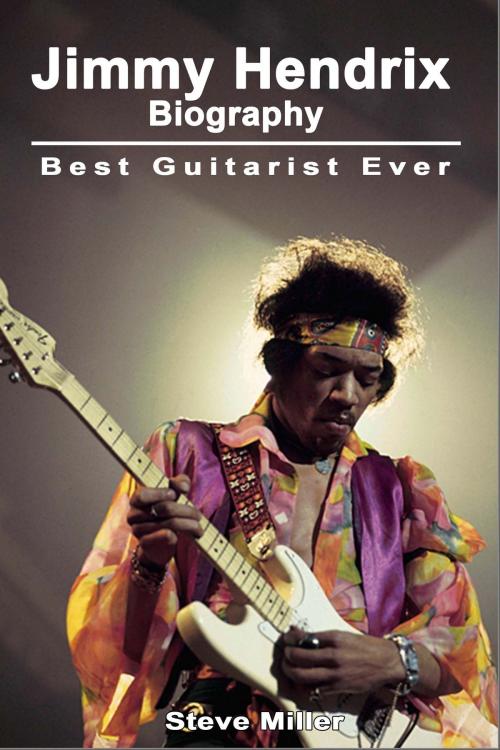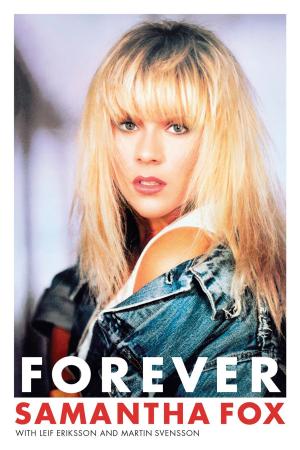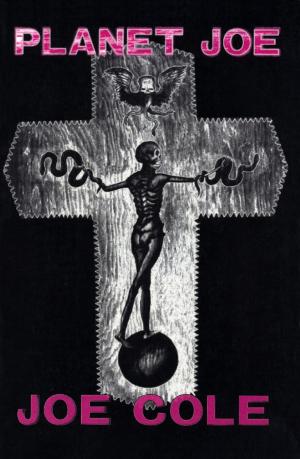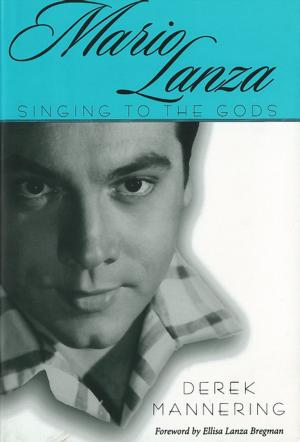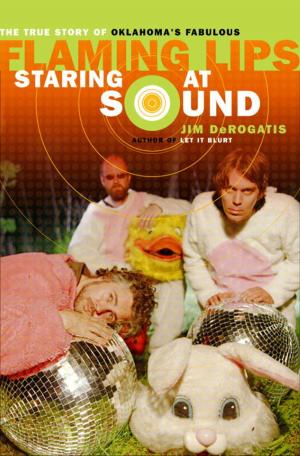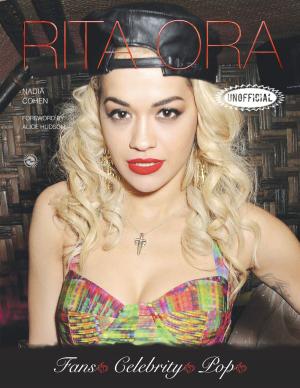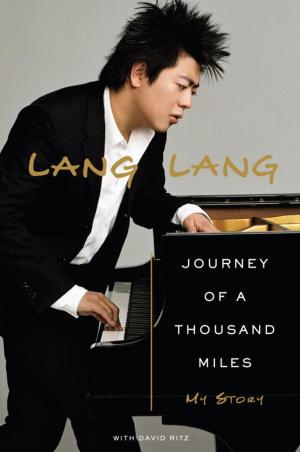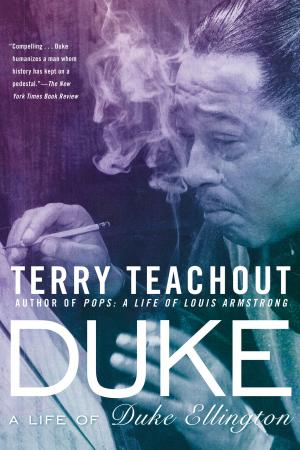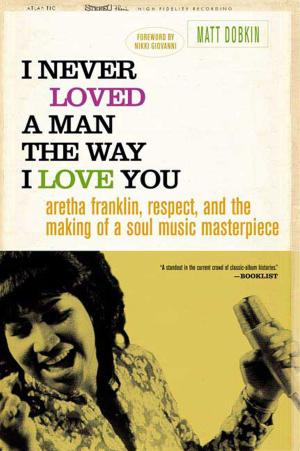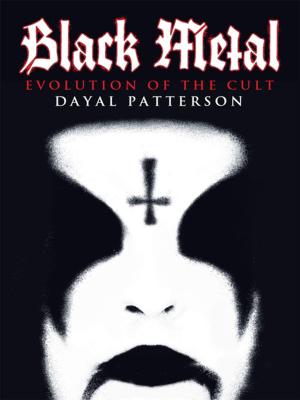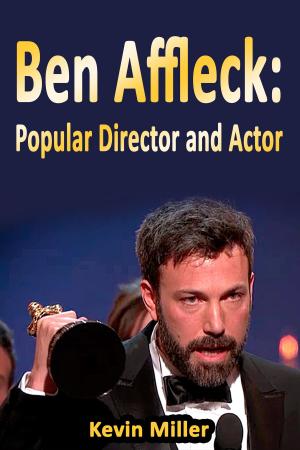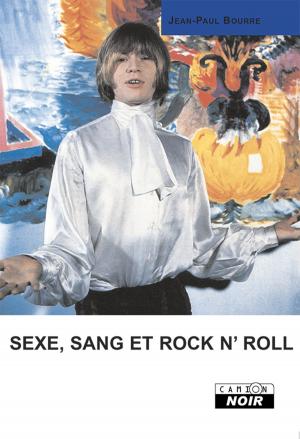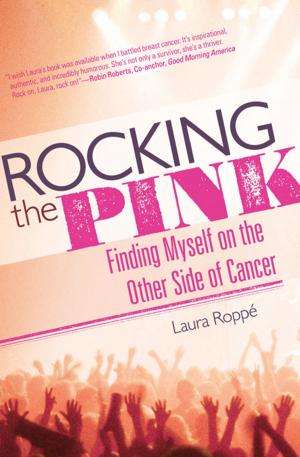Jimmy Hendrix Biography: Best Guitarist Ever
Biography & Memoir, Artists, Architects & Photographers, Nonfiction, Art & Architecture, Composers & Musicians| Author: | Steve Miller | ISBN: | 1230000201357 |
| Publisher: | Steve Miller | Publication: | December 7, 2013 |
| Imprint: | Language: | English |
| Author: | Steve Miller |
| ISBN: | 1230000201357 |
| Publisher: | Steve Miller |
| Publication: | December 7, 2013 |
| Imprint: | |
| Language: | English |
In many ways, music became a sanctuary for Hendrix. He was a fan of blues music and taught himself to play guitar. At the age of 14, Hendrix saw Elvis Presley perform. He got his first electric guitar the following year and eventually played with two bands—the Rocking Kings and the Tomcats. In 1959, Hendrix dropped out of high school. He worked odd jobs while continuing to follow his musical aspirations.
Hendrix enlisted in the United States Army in 1961 and trained at Fort Ord in California to become a paratrooper. Even as a soldier, he found time for music, creating a band named The King Casuals. Hendrix served in the army until 1962 when he was discharged due to an injury.
After leaving the military, Hendrix pursued his music, working as a session musician and playing backup for such performers as Little Richard, Sam Cooke and the Isley Brothers. He also formed a group of his own called Jimmy James and the Blue Flames, which played gigs around New York City's Greenwich Village neighborhood.
Career Breakthrough
In mid-1966, Hendrix met Chas Chandler—a former member of the Animals, a successful rock group—who became his manager. Chandler convinced Hendrix to go to London where he joined forces with musicians Noel Redding and Mitch Mitchell to create The Jimi Hendrix Experience. While there, Hendrix built up quite a following among England's rock royalty.
Members of the Beatles, the Rolling Stones, the Who and Eric Clapton were all great admirers of Hendrix's work. One critic for the British music magazine Melody Maker said that he "had great stage presence" and looked at times as if he was playing "with no hands at all."
Released in 1967, the band's first single, "Hey Joe" was an instant smash in Britain, and was soon followed by other hits such as "Purple Haze" and "The Wind Cried Mary." On tour to support his first album, Are You Experienced? (1967), Hendrix delighted audiences with his outrageous guitar-playing skills and his innovative, experimental sound.
Rock Superstar
Quickly becoming a rock music superstar, Hendrix scored again with his second album, Axis: Bold as Love (1968). His final album as part of the Jimi Hendrix Experience, Electric Ladyland (1968), was released and featured the hit "All Along the Watchtower," which was written by Bob Dylan. The band continued to tour until it split up in 1969.
That same year, Hendrix performed at another legendary musical event: the Woodstock Festival. His rock rendition of "The Star-Spangled Banner" amazed the crowds and demonstrated his considerable talents as a musician. He was also an accomplished songwriter and musical experimenter. Hendrix even had his own recording studio in which he could work with different performers and try out new songs and sounds.
Hendrix tried his luck with another group, forming Band of Gypsys in late 1969 with his army buddy Billy Cox and drummer Buddy Miles. The band never really took off, and Hendrix began working on a new album tentatively named First Rays of the New Rising Sun, with Cox and Mitch Mitchell from the Jimi Hendrix Experience. Unfortunately Hendrix did not live to complete the project.
Andre 3000 Plays Jimi Hendrix in 'All Is By My Side'
Imagining the year in which a sideman named Jimmy Hendrix turned into a star called Jimi, John Ridley's "All Is By My Side" is an oblique, offstage rock portrait, withholding many of the pleasures we expect from biopics in favor of a sometimes dreamy look at an inchoate artistic persona. One of the pleasures withheld is the sight of Hendrix playing "Hey Joe" or "Purple Haze," songs that marked his entry into the UK music scene. For that reason and others, the film isn't as commercial as one might expect for a project about one of the Sixties' most evergreen icons. What moviegoers do get is a film both thoughtful and convincing, sympathetic but not flattering to a man who had just three years after this period's end to make himself immortal.
One savvy move in both commercial and artistic terms is the lead casting of Andre Benjamin. The rapper, known as Andre 3000, hasn't acted in a film since 2008's Semi-Pro; this performance shows that (the disappointment of the OutKast movie "Idlewild" notwithstanding) Benjamin needn't be confined to comedy and genre roles where charisma is all that's required. Benjamin loses himself in Hendrix's soft, melodic speech, talking earnestly about the colors his music produces and the cosmic fate of mankind without sounding like a hippie idiot.
Much of what gives this Hendrix weight is the attention of women. We meet him in New York's Cheetah club, when Linda Keith (Imogen Poots) sees him playing with Curtis Knight and the Squires. Linda, Keith Richards's girlfriend, knows a bit about the business, and befriends Jimmy with a purpose: She insists that he find himself artistically and make his own career. After bringing a series of heavy hitters to see him play in New York (Andrew Loog Oldham and Seymour Stein are among those who pass on signing him), she arranges for former Animals member Chas Chandler (Andrew Buckley) to manage him; Chandler takes Hendrix to London to get things rolling.
The film doesn't sugarcoat Hendrix's treatment of Linda and her successor, longterm girlfriend Kathy Etchingham (Hayley Atwell): Each woman experiences at least one moment when, instead of standing up for her, Hendrix pretends he doesn't see what's going on. Late in the film his relationship with Kathy grows seriously troubled; he assaults her one night in a pub, and while she's still recovering he refuses to take her to the historic Monterrey Pop fest. But Ridley doesn't make callousness the focus of his portrait.
Here, career highlights happen between the scenes. We hang out with Jimi at home and in clubs instead of seeing his first big gigs or watching as record stores stock his debut. (Two exceptions are a jam session with Cream, in which Eric Clapton was so impressed he had to leave the stage, and a film-closing cover of "Sgt. Pepper's Lonely Hearts Club Band" with two Beatles in the audience.) We watch as the guitarist almost indifferently picks bandmates for The Experience (the flip of a coin chooses the drummer) and buys a military jacket in a thrift store (the famous piece of clothing will later be stolen by bullying London bobbies).
The film is most stylized at the beginning, with a sound design and cutting style that effectively conveys the sense of time spent with bands in rock clubs: Hours pass in a blink, conversations turn on the handfuls of words that stand out from the chatter, someone you don't know points your life in a fateful new direction. Though Linda, the catalyst in those early scenes, fades from view for much of the film, she remains in many ways its center: Two scenes in which the pair meet for heart-to-heart talks are charged to an extent no guitar-playing here can match. It's no surprise to hear that Ridley got interested in making a Hendrix film after hearing an obscure recording called "Sending My Love to Linda."
To the Left, To the Left
Jimi Hendrix played guitar upside down and backwards, and to his devout fans' parents, it probably sounded like it. The six-string revolutionary favored a right-handed Fender Stratocaster, slung upside-down across his shoulders, that didn't even need to be restrung: Hendrix taught himself how to hit the strings in reverse order, producing a unique sound and allowing him to alternate between left- and right-handed playing if he so desired. (He could play right-handed but generally preferred not to).
Hendrix learned to play in Nashville blues clubs before touring as a back-up musician for the Isley Brothers and Little Richard. He broke out on his own in 1966, but his career was cut short by a drug overdose in August 1970. Hendrix's use of distortion and wah-wah effects warped and extended notes in ways no other player could quite achieve; for years, right-handed guitarists have tried to emulate his sound, going so far as to put left-handed necks on their own guitars.
There was one technique not impacted by Hendrix's lefthandedness: setting his guitar on fire. For that, he used both hands.
Jimi Hendrix Drops Out As Opening Act for the Monkees
On July 17, 1967, one of the oddest musical pairings in history comes to an end when Jimi Hendrix dropped out as the opening act for teenybopper sensations The Monkees.
The booking of psychedelic rock god Jimi Hendrix with the made-for-television Monkees was the brainchild of Hendrix's manager, Mike Jeffery, who was seeking greater public exposure for a young client who was a budding star in the UK, but a near-unknown in his native United States. It was in the UK, in fact, that Monkee Mike Nesmith first heard a tape of Hendrix playing while at a dinner party with John Lennon, Paul McCartney and Eric Clapton. Nesmith and his fellow Monkees Peter Tork and Mickey Dolenz became instant Jimi Hendrix fans, and after witnessing his legendary performance at the Monterey Pop Festival in June 1967, they encouraged their own manager to invite the little-known but highly respected Jimi Hendrix Experience to join their upcoming U.S. tour.
In many ways, music became a sanctuary for Hendrix. He was a fan of blues music and taught himself to play guitar. At the age of 14, Hendrix saw Elvis Presley perform. He got his first electric guitar the following year and eventually played with two bands—the Rocking Kings and the Tomcats. In 1959, Hendrix dropped out of high school. He worked odd jobs while continuing to follow his musical aspirations.
Hendrix enlisted in the United States Army in 1961 and trained at Fort Ord in California to become a paratrooper. Even as a soldier, he found time for music, creating a band named The King Casuals. Hendrix served in the army until 1962 when he was discharged due to an injury.
After leaving the military, Hendrix pursued his music, working as a session musician and playing backup for such performers as Little Richard, Sam Cooke and the Isley Brothers. He also formed a group of his own called Jimmy James and the Blue Flames, which played gigs around New York City's Greenwich Village neighborhood.
Career Breakthrough
In mid-1966, Hendrix met Chas Chandler—a former member of the Animals, a successful rock group—who became his manager. Chandler convinced Hendrix to go to London where he joined forces with musicians Noel Redding and Mitch Mitchell to create The Jimi Hendrix Experience. While there, Hendrix built up quite a following among England's rock royalty.
Members of the Beatles, the Rolling Stones, the Who and Eric Clapton were all great admirers of Hendrix's work. One critic for the British music magazine Melody Maker said that he "had great stage presence" and looked at times as if he was playing "with no hands at all."
Released in 1967, the band's first single, "Hey Joe" was an instant smash in Britain, and was soon followed by other hits such as "Purple Haze" and "The Wind Cried Mary." On tour to support his first album, Are You Experienced? (1967), Hendrix delighted audiences with his outrageous guitar-playing skills and his innovative, experimental sound.
Rock Superstar
Quickly becoming a rock music superstar, Hendrix scored again with his second album, Axis: Bold as Love (1968). His final album as part of the Jimi Hendrix Experience, Electric Ladyland (1968), was released and featured the hit "All Along the Watchtower," which was written by Bob Dylan. The band continued to tour until it split up in 1969.
That same year, Hendrix performed at another legendary musical event: the Woodstock Festival. His rock rendition of "The Star-Spangled Banner" amazed the crowds and demonstrated his considerable talents as a musician. He was also an accomplished songwriter and musical experimenter. Hendrix even had his own recording studio in which he could work with different performers and try out new songs and sounds.
Hendrix tried his luck with another group, forming Band of Gypsys in late 1969 with his army buddy Billy Cox and drummer Buddy Miles. The band never really took off, and Hendrix began working on a new album tentatively named First Rays of the New Rising Sun, with Cox and Mitch Mitchell from the Jimi Hendrix Experience. Unfortunately Hendrix did not live to complete the project.
Andre 3000 Plays Jimi Hendrix in 'All Is By My Side'
Imagining the year in which a sideman named Jimmy Hendrix turned into a star called Jimi, John Ridley's "All Is By My Side" is an oblique, offstage rock portrait, withholding many of the pleasures we expect from biopics in favor of a sometimes dreamy look at an inchoate artistic persona. One of the pleasures withheld is the sight of Hendrix playing "Hey Joe" or "Purple Haze," songs that marked his entry into the UK music scene. For that reason and others, the film isn't as commercial as one might expect for a project about one of the Sixties' most evergreen icons. What moviegoers do get is a film both thoughtful and convincing, sympathetic but not flattering to a man who had just three years after this period's end to make himself immortal.
One savvy move in both commercial and artistic terms is the lead casting of Andre Benjamin. The rapper, known as Andre 3000, hasn't acted in a film since 2008's Semi-Pro; this performance shows that (the disappointment of the OutKast movie "Idlewild" notwithstanding) Benjamin needn't be confined to comedy and genre roles where charisma is all that's required. Benjamin loses himself in Hendrix's soft, melodic speech, talking earnestly about the colors his music produces and the cosmic fate of mankind without sounding like a hippie idiot.
Much of what gives this Hendrix weight is the attention of women. We meet him in New York's Cheetah club, when Linda Keith (Imogen Poots) sees him playing with Curtis Knight and the Squires. Linda, Keith Richards's girlfriend, knows a bit about the business, and befriends Jimmy with a purpose: She insists that he find himself artistically and make his own career. After bringing a series of heavy hitters to see him play in New York (Andrew Loog Oldham and Seymour Stein are among those who pass on signing him), she arranges for former Animals member Chas Chandler (Andrew Buckley) to manage him; Chandler takes Hendrix to London to get things rolling.
The film doesn't sugarcoat Hendrix's treatment of Linda and her successor, longterm girlfriend Kathy Etchingham (Hayley Atwell): Each woman experiences at least one moment when, instead of standing up for her, Hendrix pretends he doesn't see what's going on. Late in the film his relationship with Kathy grows seriously troubled; he assaults her one night in a pub, and while she's still recovering he refuses to take her to the historic Monterrey Pop fest. But Ridley doesn't make callousness the focus of his portrait.
Here, career highlights happen between the scenes. We hang out with Jimi at home and in clubs instead of seeing his first big gigs or watching as record stores stock his debut. (Two exceptions are a jam session with Cream, in which Eric Clapton was so impressed he had to leave the stage, and a film-closing cover of "Sgt. Pepper's Lonely Hearts Club Band" with two Beatles in the audience.) We watch as the guitarist almost indifferently picks bandmates for The Experience (the flip of a coin chooses the drummer) and buys a military jacket in a thrift store (the famous piece of clothing will later be stolen by bullying London bobbies).
The film is most stylized at the beginning, with a sound design and cutting style that effectively conveys the sense of time spent with bands in rock clubs: Hours pass in a blink, conversations turn on the handfuls of words that stand out from the chatter, someone you don't know points your life in a fateful new direction. Though Linda, the catalyst in those early scenes, fades from view for much of the film, she remains in many ways its center: Two scenes in which the pair meet for heart-to-heart talks are charged to an extent no guitar-playing here can match. It's no surprise to hear that Ridley got interested in making a Hendrix film after hearing an obscure recording called "Sending My Love to Linda."
To the Left, To the Left
Jimi Hendrix played guitar upside down and backwards, and to his devout fans' parents, it probably sounded like it. The six-string revolutionary favored a right-handed Fender Stratocaster, slung upside-down across his shoulders, that didn't even need to be restrung: Hendrix taught himself how to hit the strings in reverse order, producing a unique sound and allowing him to alternate between left- and right-handed playing if he so desired. (He could play right-handed but generally preferred not to).
Hendrix learned to play in Nashville blues clubs before touring as a back-up musician for the Isley Brothers and Little Richard. He broke out on his own in 1966, but his career was cut short by a drug overdose in August 1970. Hendrix's use of distortion and wah-wah effects warped and extended notes in ways no other player could quite achieve; for years, right-handed guitarists have tried to emulate his sound, going so far as to put left-handed necks on their own guitars.
There was one technique not impacted by Hendrix's lefthandedness: setting his guitar on fire. For that, he used both hands.
Jimi Hendrix Drops Out As Opening Act for the Monkees
On July 17, 1967, one of the oddest musical pairings in history comes to an end when Jimi Hendrix dropped out as the opening act for teenybopper sensations The Monkees.
The booking of psychedelic rock god Jimi Hendrix with the made-for-television Monkees was the brainchild of Hendrix's manager, Mike Jeffery, who was seeking greater public exposure for a young client who was a budding star in the UK, but a near-unknown in his native United States. It was in the UK, in fact, that Monkee Mike Nesmith first heard a tape of Hendrix playing while at a dinner party with John Lennon, Paul McCartney and Eric Clapton. Nesmith and his fellow Monkees Peter Tork and Mickey Dolenz became instant Jimi Hendrix fans, and after witnessing his legendary performance at the Monterey Pop Festival in June 1967, they encouraged their own manager to invite the little-known but highly respected Jimi Hendrix Experience to join their upcoming U.S. tour.
